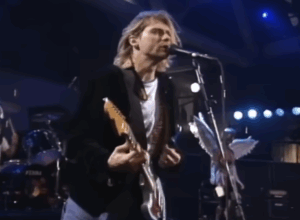How To Nail Paul McCartney’s Bass Tone

via strangedaysindeed9 / YouTube
The Beatles’ bass tone, immortalized by Paul McCartney, is one of the most recognizable sounds in popular music. For decades, fans and musicians alike have associated this tone with McCartney’s iconic Höfner violin bass. But what if you want that classic sound without tracking down a vintage Höfner?
Thanks to YouTuber Philip Conrad’s insightful video, we now know that modern gear and a few clever tricks can help you capture the spirit of the Beatles’ bass without breaking the bank. The secret lies not just in the instrument, but in your approach: the right bass, strings, playing style, and amp settings all play a part. With a few simple adjustments, you’ll be channeling McCartney’s magic in no time.
Whether you’re a gigging musician, a home recording enthusiast, or just a Beatles superfan, these tips—based on Philip Conrad’s expert advice—will help you get closer to that legendary tone. Let’s break down the essentials, step by step.
View this post on Instagram
Use a Short-Scale Bass
Short-scale basses are key to nailing the Beatles’ thumpy, warm sound. While the Höfner is the classic example, affordable alternatives like the Fender Mustang, Bronco, or Musicmaster can get you surprisingly close. These basses typically have a 30-inch scale, which softens the attack and emphasizes the low end.
The shorter scale also makes the instrument more comfortable to play, especially for those with smaller hands. This can encourage a more relaxed, melodic playing style—something McCartney was known for. Don’t worry if your bass isn’t hollow or semi-hollow; the scale length is the biggest factor.
If you already have a short-scale bass, you’re halfway there. If not, consider picking one up or borrowing from a friend. The tonal difference is immediately noticeable, and it’s a fun addition to any collection.
View this post on Instagram
Favor the Neck Pickup
McCartney’s tone often came from using the neck pickup, which delivers a rounder, deeper sound. On most basses with multiple pickups, simply roll off the bridge pickup and focus on the neck. This simple switch can make a world of difference.
The neck pickup emphasizes the fundamental frequencies, reducing brightness and adding warmth. This is especially important if you’re trying to avoid a modern, clanky tone. Even on a budget instrument, this trick will get you closer to that vintage vibe.
Experiment with your bass’s tone knob as well. Rolling it down a bit can further mellow out your sound, making it smoother and more reminiscent of the Beatles’ recordings.
View this post on Instagram
Choose the Right Strings
Strings play a massive role in shaping your tone. For early Beatles songs, flatwound strings are a must—they’re smooth, mellow, and thumpy. For later-era tracks, nylon tapewound strings add a woody, almost upright-bass quality.
Changing your strings is one of the quickest ways to transform your sound. Flatwounds reduce finger noise and sustain, giving you that classic “thump” heard on so many Beatles records. Nylon tapewounds are even darker and softer, perfect for the band’s later material.
Don’t be afraid to experiment. If you’ve only ever used roundwound strings, the difference will be dramatic—and you may never go back!
View this post on Instagram
Play with a Pick—Preferably Felt
McCartney often played with a pick, which adds definition and punch to each note. While the exact type of pick he used is debated, a felt pick (like those for ukuleles) is a great way to achieve a softer, rounded attack.
Using a pick also helps you cut through the mix, especially in a band setting. It gives your playing a rhythmic precision that’s essential for many Beatles bass lines. If you’ve always played with your fingers, give a pick a try—you might be surprised by the results.
A felt pick, in particular, softens the attack and reduces harshness, making your notes bloom in a way that’s unmistakably vintage. It’s a small change with a big impact.
View this post on Instagram
Adjust Your Tone and Technique
How you play is just as important as what you play. Rolling down your tone knob removes excessive brightness, while raising your string action slightly reduces fret noise and enhances that percussive “thump.”
Try playing closer to the neck, between the neck and the pickups. This position brings out a “woofier,” more authentic Beatles vibe. Small changes in your right-hand placement can dramatically alter your sound.
Finally, don’t be afraid to experiment with your touch. A lighter, more melodic approach—combined with the right gear—will get you closer to McCartney’s unmistakable style.
View this post on Instagram
Use Amp and Effects Settings Wisely
Paul McCartney often used Fender Bassman amps, but you don’t need vintage gear to get in the ballpark. Modern preamp pedals that emulate the Bassman sound, like the Origin Effects ’64 Black Panel Preamp, are affordable and effective.
Boosting mids and treble on your amp or preamp helps compensate for the darker strings and rolled-off tone knob. A touch of saturation or overdrive can add warmth and character, mimicking the subtle breakup of old tube amps.
Compression is another secret weapon. An 1176-style compressor with a medium ratio and a slight delay on the attack can fatten your sound, even out your dynamics, and preserve your pick attack—all essential for that Beatles bass magic.
View this post on Instagram
Mastering the Beatles’ Bass Sound
You don’t need a Höfner to sound like the Beatles. With a short-scale bass, the right strings, a felt pick, and some thoughtful amp settings, you can get remarkably close. Most importantly, focus on your technique and have fun experimenting.
The Beatles’ sound was as much about creativity and attitude as it was about gear. Use these tips—courtesy of Philip Conrad’s expert breakdown—as a starting point, and don’t be afraid to make the sound your own.
Now, go forth and channel your inner McCartney—no violin bass required! For a detailed demonstration and additional tips, check out Philip Conrad’s full video below:












